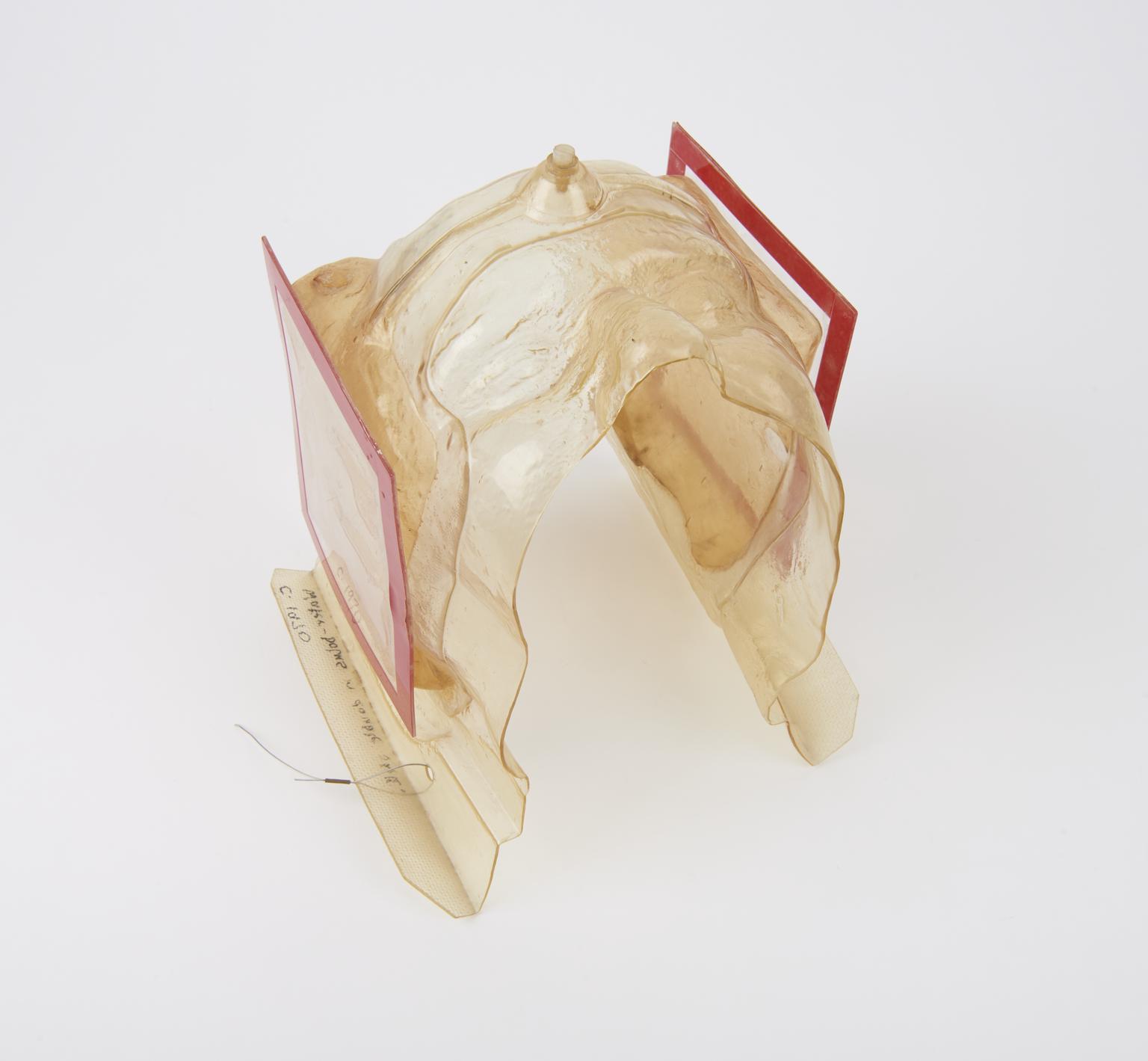Control desk for 35 MeV betatron for cancer therapy by Brown Boveri
Control desk for 35 MeV betatron for cancer therapy by Brown Boveri, Switzerland, c1965 from St. Luke's Hospital, Guildford
- Object Number:
- 1990-112/1
- type:
- control desk
35 MeV betatron for cancer therapy by Brown Boveri, Switzerland, c1965 from St. Luke's Hospital, Guildford, comprises: main unit, couch assembly, control desk, support cladding, magnetic "lens", spare "donut", applicators and accessories, and documentation
35 MeV betatron for cancer therapy by Brown Boveri, Switzerland, from St. Luke's Hospital, Guildford, comprises: main unit, couch assembly, control desk, support cladding, magnetic "lens", spare "donut", applicators and accessories, and documentation. Illustrated is a face mould, a perspex cast of the patient's face which holds the head in the same position and marks the region being treated by the radiotherapy.
Control desk for 35 MeV betatron for cancer therapy by Brown Boveri, Switzerland, c1965 from St. Luke's Hospital, Guildford
Magnetic 'lens' for 35 MeV betatron for cancer therapy by Brown Boveri, Switzerland, c1965 from St. Luke's Hospital, Guildford
Couch unit for the 35 MeV betatron for cancer therapy by Brown Boveri, Switzerland, c1965 from St. Luke's Hospital, Guildford

Face mould applicator, one of three, for administrating radiotherapy using the 35 MeV betatron for cancer therapy by Brown Boveri, Switzerland, from St. Luke's Hospital, Guildford, 1960-70.
Face mould applicator, one of three, for administrating radiotherapy using the 35 MeV betatron for cancer therapy, by Brown Boveri, Switzerland, from St. Luke's Hospital, Guildford, 1962-65. With measurements marked on object.
Radiotherapy treatment for cancer needs to be accurately targeted as the treatment can damage surrounding healthy cells. Here, a plaster cast was prepared of the person’s face from which a Perspex (a type of acrylic plastic) mould was made. The Perspex mould would then be used to hold the patient’s head in a fixed position, allowing the treatment area to be accurately marked. This example was used at St Luke’s Hospital in Guilford, Surrey, England.
Some hospitals give their patients the opportunity to take their masks when they finished their treatment as a symbol of their recovery. It is shown here with a similar example (1990-112/6).
Full face mould applicator with plaster of paris mould insert, one of three, for administering radiotherapy using the 35 MeV betatron for cancer therapy, by Brown Boveri, Switzerland, from St. Luke's Hospital, Guildford, 1962-65.
Radiotherapy treatment for cancer needs to be targeted accurately as the treatment can damage surrounding healthy cells. Here, a plaster cast was prepared of the person’s face from which a Perspex (a type of acrylic plastic) mould was made. The Perspex mould would then be used to hold the patient’s head in a fixed position, allowing the treatment area to be accurately marked. This example was used at St Luke’s Hospital in Guilford, Surrey, England.
Some hospitals give their patients the opportunity to take their masks when they finished their treatment as a symbol of their recovery. It is shown with a similar example (1990-112/5.)

Part of the 35 MeV betatron for cancer therapy, possibly a tissue density compensator, c1965 from St. Luke's Hospital, Guildford
35 MeV betatron for cancer therapy by Brown Boveri, Switzerland, from St. Luke's Hospital, Guildford, comprises: main unit, couch assembly, control desk, support cladding, magnetic "lens", spare "donut", applicators and accessories, and documentation. Illustrated is a face mould, a perspex cast of the patient's face which holds the head in the same position and marks the region being treated by the radiotherapy.